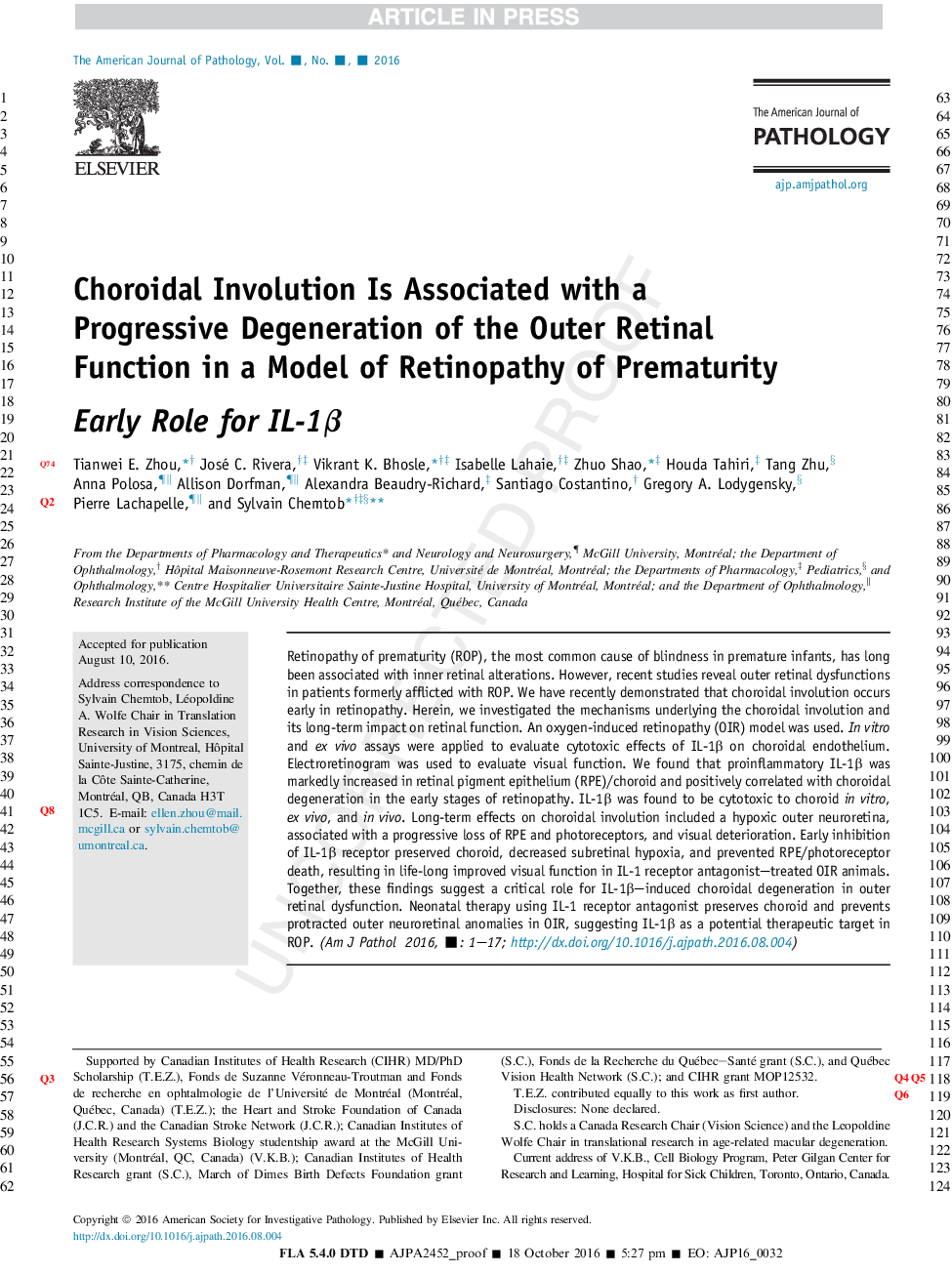| Article ID | Journal | Published Year | Pages | File Type |
|---|---|---|---|---|
| 5596192 | The American Journal of Pathology | 2016 | 18 Pages |
Abstract
Retinopathy of prematurity (ROP), the most common cause of blindness in premature infants, has long been associated with inner retinal alterations. However, recent studies reveal outer retinal dysfunctions in patients formerly afflicted with ROP. We have recently demonstrated that choroidal involution occurs early in retinopathy. Herein, we investigated the mechanisms underlying the choroidal involution and its long-term impact on retinal function. An oxygen-induced retinopathy (OIR) model was used. In vitro and ex vivo assays were applied to evaluate cytotoxic effects of IL-1β on choroidal endothelium. Electroretinogram was used to evaluate visual function. We found that proinflammatory IL-1β was markedly increased in retinal pigment epithelium (RPE)/choroid and positively correlated with choroidal degeneration in the early stages of retinopathy. IL-1β was found to be cytotoxic to choroid in vitro, ex vivo, and in vivo. Long-term effects on choroidal involution included a hypoxic outer neuroretina, associated with a progressive loss of RPE and photoreceptors, and visual deterioration. Early inhibition of IL-1β receptor preserved choroid, decreased subretinal hypoxia, and prevented RPE/photoreceptor death, resulting in life-long improved visual function in IL-1 receptor antagonist-treated OIR animals. Together, these findings suggest a critical role for IL-1β-induced choroidal degeneration in outer retinal dysfunction. Neonatal therapy using IL-1 receptor antagonist preserves choroid and prevents protracted outer neuroretinal anomalies in OIR, suggesting IL-1β as a potential therapeutic target in ROP.
Related Topics
Health Sciences
Medicine and Dentistry
Cardiology and Cardiovascular Medicine
Authors
Tianwei E. Zhou, José C. Rivera, Vikrant K. Bhosle, Isabelle Lahaie, Zhuo Shao, Houda Tahiri, Tang Zhu, Anna Polosa, Allison Dorfman, Alexandra Beaudry-Richard, Santiago Costantino, Gregory A. Lodygensky, Pierre Lachapelle, Sylvain Chemtob,
